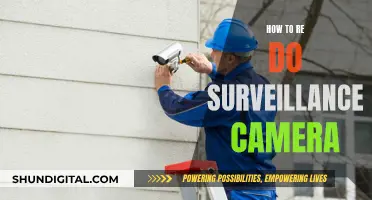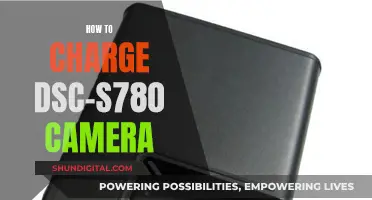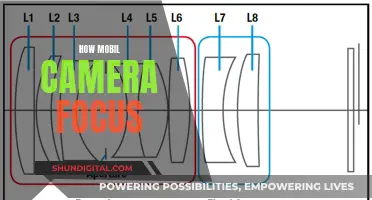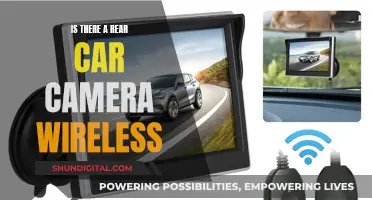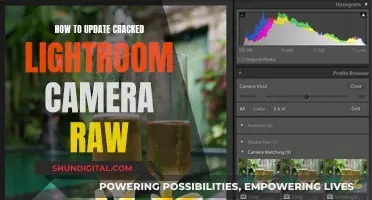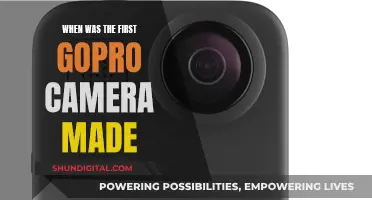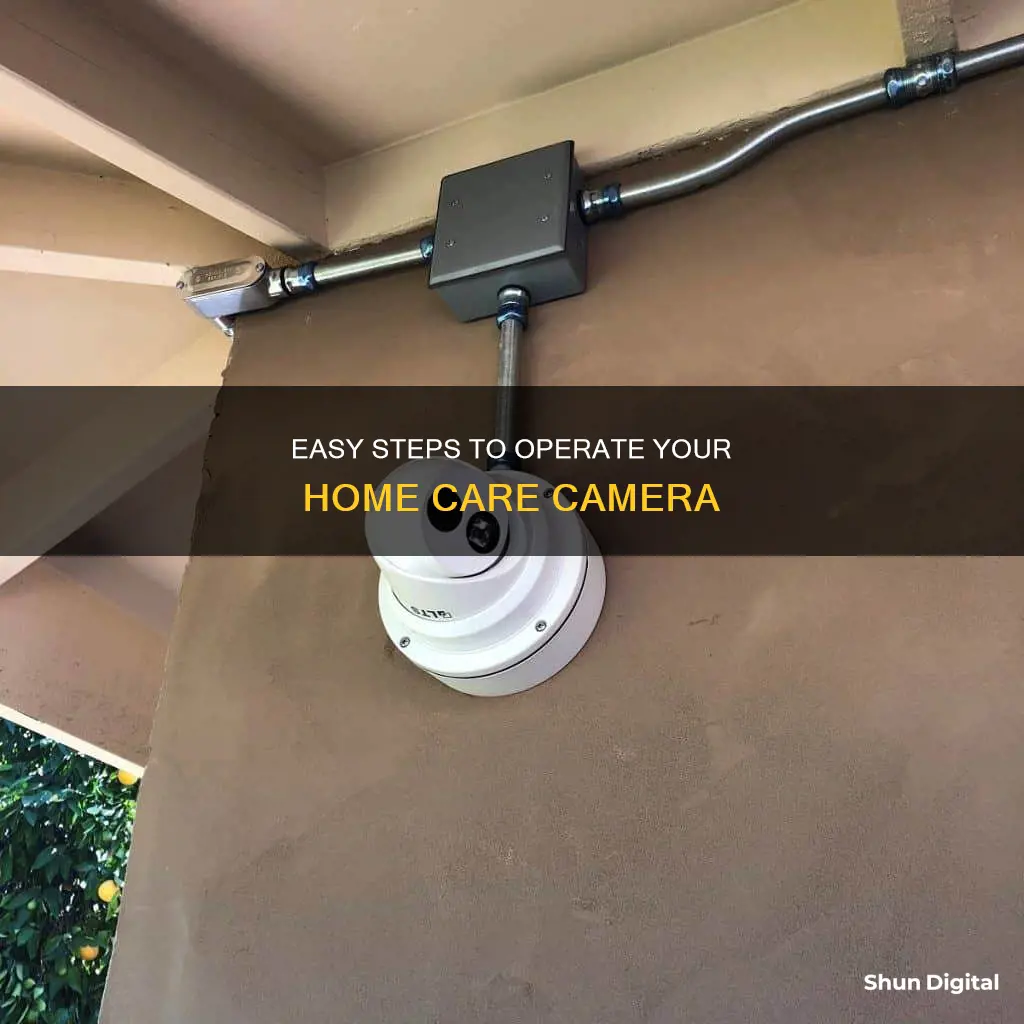
The use of cameras to monitor the care of vulnerable people in their own homes or in long-term care settings is a complex issue with legal and ethical implications. While cameras can provide peace of mind and a higher level of involvement for family members, they can also be seen as an invasion of privacy and a breach of human rights for those being monitored and recorded. It is important to consider the legal risks and take steps to protect the privacy of those being recorded. In addition, the decision to use cameras can have implications for the level of trust between caregivers and care receivers, as well as potentially inhibiting the formation of genuine friendships and creative care approaches. The installation and operation of home care cameras require careful consideration of these factors, as well as adherence to relevant laws and regulations.
| Characteristics | Values |
|---|---|
| Purpose | To monitor the care of a loved one |
| Privacy Concerns | May invade the privacy of the resident, their roommates, staff, and other visitors |
| Legal Status | Varies by state/country, but may be considered a breach of human rights |
| Permission | Permission from the person being cared for is required, as well as consent from roommates and their families |
| Security | Recordings should be stored securely to prevent tampering or unauthorized sharing |
| Alternatives | Raise concerns with the care provider or relevant authorities, employ a companion carer, or visit regularly |
What You'll Learn

Privacy and dignity considerations
Firstly, it is crucial to obtain informed consent from the person being cared for. Just because they do not object to the camera does not mean they consent to its use. Their agreement should be explicit, and you should explain who will have access to the recordings. If the person lacks the capacity to consent, such as in cases of dementia, you must be confident that installing the camera is in their best interests.
Secondly, consider the privacy of care staff and visitors. They may feel uncomfortable being recorded and perceive it as a breach of their rights. This could lead to legal action or complaints. Respecting their privacy also means not placing cameras in private spaces like bedrooms and bathrooms.
Thirdly, ensure secure storage of recordings. Choose a secure system with strong passwords, and do not share the login details with anyone unless they have a valid reason to access the footage. Regularly review and update your security measures to protect the data.
Additionally, be transparent about the camera's purpose and placement. Discuss its use with the care recipient, their family, and staff. Emphasise that the camera is for safety and security, and address any privacy concerns they may have.
Finally, be mindful of the potential impact on the well-being of the care recipient and others. Constant surveillance may cause discomfort or affect the relationship between staff and residents. It is essential to balance safety with the right to privacy and dignity.
Remember, while home care cameras can provide peace of mind and help identify issues, they must be used with caution to respect the privacy and dignity of all involved.
CHP Cars and Cameras: Are They Equipped?
You may want to see also

Legal risks and consequences
The use of cameras in care homes is a highly debated topic, with supporters welcoming the additional protection it provides to vulnerable residents, and opponents expressing concerns about the adverse implications for the privacy and dignity of residents and staff.
Invasion of Privacy
The use of cameras, especially hidden cameras, in private spaces such as bedrooms, changing rooms, and bathrooms, is considered an invasion of privacy. This applies not only to the person being cared for but also to their roommates, staff, and visitors. Ensure that cameras are placed in common areas and avoid any areas where individuals may expect a reasonable level of privacy.
Consent
It is important to obtain consent from the person being cared for and, if applicable, their roommates. In the case of individuals who lack the capacity to give consent, such as those with dementia or other cognitive disorders, it is advisable to seek legal advice to ensure compliance with relevant laws, such as the Mental Capacity Act. Additionally, consider the potential impact on staff and visitors, as they may feel that their rights are being breached and could take legal action.
Data Protection
The use of cameras in care homes falls under the General Data Protection Regulation (GDPR), which requires compliance with data protection principles. Care homes must identify the relevant lawful bases for processing personal and special category data, ensure transparency, and have appropriate security measures in place to prevent unauthorised access to recordings. The storage and use of footage should also be carefully considered, with personal data being retained only for as long as necessary.
Compliance with Regulations
In addition to the GDPR, care homes should be aware of other regulations, such as the Regulation of Investigatory Powers Act (RIPA) 2000, which governs the use of surveillance by public bodies. Care homes should also refer to the Surveillance Camera Code of Practice for guidance on the legal and ethical use of surveillance cameras.
Contractual Obligations
Before installing cameras, check the policies of the care home and ensure that you are not violating any contractual obligations. Some care homes may have rules regarding recording equipment to protect the privacy of their residents and staff.
Legal Action and Consequences
If cameras are placed in areas that violate privacy or are used without proper consent, legal action may be taken by affected individuals. This could result in financial penalties, criminal charges, or civil lawsuits. Additionally, unauthorised cameras may be removed or destroyed by the care home staff, and the person being cared for may even be removed from the facility.
It is important to carefully consider the legal implications of operating a home care camera and to seek legal advice to ensure compliance with all relevant laws and regulations.
Understanding Camera's Antishake Mode: How It Works
You may want to see also

Permission and consent
Privacy and Dignity
Installing a hidden camera in a care setting can affect people's privacy and dignity. It is important to weigh the benefits of monitoring, such as ensuring safety and identifying potential abuse, against the potential intrusion on the privacy of the cared-for individual and others in the care setting.
Legal Considerations
The use of hidden cameras can have legal consequences. Staff or visitors may feel their rights are breached and could take legal action. Additionally, the Information Commissioner could investigate and take enforcement action. It is important to understand and mitigate any legal risks and to consider ways to minimise the impact on people's privacy.
Consent of the Cared-for Individual
It is essential to respect the consent of the person receiving care. Even if they do not explicitly object, it does not mean they consent. If they are capable of giving permission, it is important to explain the purpose of the camera and who will have access to the recordings, and to document their agreement. If the person lacks the capacity to consent, such as in cases of dementia, it is crucial to ensure that the use of the camera is in their best interests.
Care Provider's Policy
Before installing a camera, it is important to check the care provider's policy and rules regarding recording equipment. Some care providers have specific guidelines to protect people's privacy, and installing equipment without their knowledge could breach your contract with them.
Privacy Expectations
To respect privacy, it is generally recommended to avoid placing cameras in areas with a higher expectation of privacy, such as bedrooms, bathrooms, and changing areas. Keep the cameras limited to common areas where individuals would not reasonably expect complete privacy.
Secure Storage of Recordings
If you decide to use a camera, ensure that you store the recordings securely. Protect the recordings from tampering and only share them with individuals who have a legitimate reason to access them. Use strong passwords and secure systems, especially if the camera transmits data over the internet.
In summary, while home care cameras can provide peace of mind and ensure the safety of your loved ones, it is essential to carefully consider the impact on privacy, obtain necessary consents, and follow relevant guidelines and legal advice to protect the rights of all involved parties.
Understanding Camera Battery Labels: S and T Explained
You may want to see also

Installation and setup
Setting up a home care camera can be a daunting task, but with the right instructions, it can be done efficiently. Here is a step-by-step guide to installing and setting up a home care camera system.
Step 1: Planning
Before purchasing any equipment, decide on the locations for your cameras. Identify the areas you want to monitor and consider possible camera angles. Typical placements include entry doors, windows, porches, stairways, driveways, and interior common rooms. Ensure that each location has a clear line of sight and no obstructions. If installing a camera outdoors, choose a placement that is higher than 10 feet and protected from inclement weather. Consider the number of cameras you will need and whether you want a wired or wireless setup.
Step 2: Purchasing Equipment
Once you have determined your requirements, purchase a home security camera system that suits your needs. You can buy individual components, but it is generally cheaper and easier to buy bundled security systems. Your system should include cameras, a recording device (such as a DVR, NVR, or VCR), wiring (such as Siamese cables and BNC cables), and power cords. Consider additional features such as motion sensing and remote viewing capabilities. Test all components before beginning the installation.
Step 3: Mounting Cameras
Determine the best angle for your cameras, usually looking down from a corner where the ceiling meets the walls. Ensure you can clearly see all entries and exits, and that the cameras are near power outlets. For outdoor cameras, place them above 10 feet so they cannot be easily knocked down. Most cameras can be mounted using screws. Use a drill to make holes for the screws and secure the mount to the wall. Then, position the camera at the desired angle.
Step 4: Connecting Cameras
For wired cameras, use BNC cables to connect the camera's "Output" to the "Input" port on the DVR. Note the input port number, as this is the input your DVR must be set to in order to view that camera's video. For wireless cameras, install the provided software and follow the instructions to connect your cameras to your computer. Take note of the camera's IP address, as this can be used to view the camera feed remotely.
Step 5: Connecting the Monitor
Use a BNC, HDMI, or coaxial cable to connect the DVR's "Output" port to the monitor's "Input" port. You can connect multiple cameras to a single DVR, which will automatically record from all cameras. The monitor may display each camera simultaneously or allow you to cycle through them using an "input" button.
Step 6: Hiding Wires
To achieve a professional-looking installation, you can hide wires by running them through the walls towards your surveillance hub. Ensure you are aware of the layout of your walls and the location of any pipes, cables, or studs. Drilling holes in the walls and threading the cables through open spaces, such as the attic, can help achieve this. Alternatively, you can secure cables to the walls or baseboards using a staple gun or hide them under rugs.
Exploring Japan's Extensive Surveillance Camera Network
You may want to see also

Storage and security
When storing and securing footage from your home care camera, there are a few important things to keep in mind. Firstly, it is crucial to obtain consent from the person being cared for. While they may not object to the camera, their explicit agreement is necessary. If the person lacks the capacity to give consent, such as in cases of dementia, ensure that you are acting in their best interests.
Additionally, it is important to respect the privacy of care staff and visitors. They may feel uncomfortable being recorded and perceive it as a breach of their rights, which could lead to legal action. To reduce the impact on privacy, consider raising your concerns with the care provider first and obtaining their permission before installing any recording equipment.
To ensure the security of your recordings, use a secure system and create a strong password that you do not share with anyone. Regularly back up your footage to prevent tampering or loss.
Finally, be aware of the legal implications of using hidden cameras in care homes. While there may be no legal reason to prohibit their use, some organizations, like the Care Quality Commission, do not authorize "intrusive covert surveillance" in bedrooms. Always seek legal advice before installing recording equipment to avoid any potential consequences.
Focusing on Camera Image: The Key Component Explained
You may want to see also
Frequently asked questions
The legality of installing a hidden camera in a care home room depends on the state and the policies of the nursing home. While some states allow private cameras in nursing homes, others require signed consent forms from the resident and their roommates. It is important to check the local laws and the care home's policies before installing any recording device.
Cameras in care home rooms can provide an extra layer of security and peace of mind for families who may be concerned about the well-being of their loved ones. They can help identify poor care or abuse and hold caregivers accountable for their actions. Additionally, cameras can reassure families that their loved ones are being properly cared for.
One major disadvantage is the potential invasion of privacy for the resident, their roommates, and staff members. Cameras may also lead to increased staff resentment and false accusations. In addition, unauthorised cameras may result in legal consequences and the removal of the resident from the care home.
Before considering a hidden camera, it is recommended to first raise any concerns directly with the care provider. Care services are expected to investigate any concerns raised by residents or their families. Regular visits by family members or friends can also help monitor the care being provided. Additionally, some states offer programs that loan out hidden cameras to families who suspect abuse or neglect.


